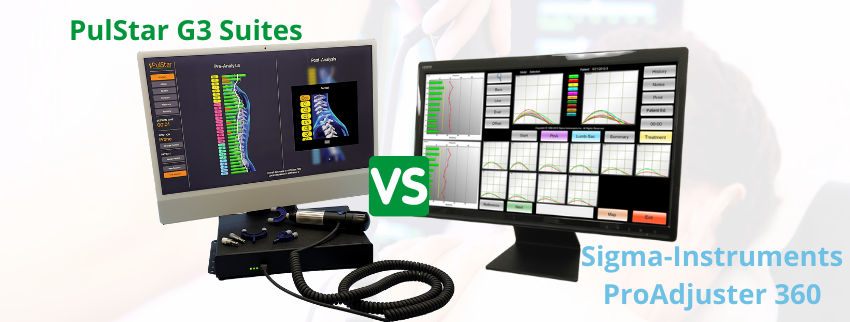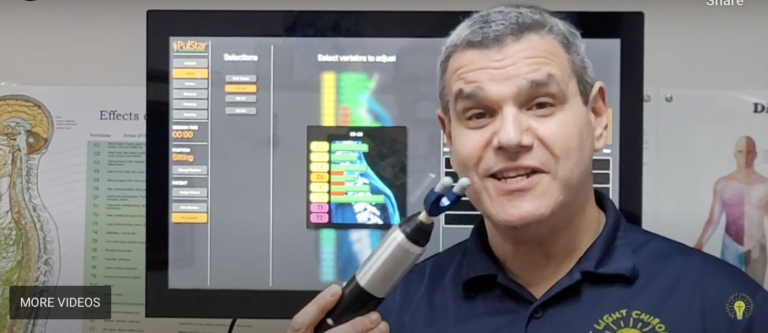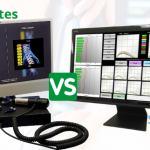The ways in which instrument adjusting has changed the chiropractic world cannot be understated. Any doctor of chiropractic that has learned and utilized adjustment instruments and visualization technology can attest to the numerous benefits these innovations provide for the patient, the practice, and the doctor of chiropractic themselves.
The advantages of such instruments are impossible to dismiss. What can be almost impossible, is sorting through the various options on the market today and reaching a confident conclusion as to which would serve your patients and your practice the best. There are several fantastic instrument offerings, each with its own strengths and weaknesses, making it difficult to determine what differentiates them, let alone how to choose one to use in your practice.
Some doctors of chiropractic have opted for Sigma Instruments, which offers both analysis and adjustment, making them a relatively comprehensive option for those looking to implement added technologies into their workflow. Whether you have used Sigma Instruments for some time or are considering investing in the brand, you may have noticed that there are a few shortcomings with regards to both the tools and business model.
We encourage you to thoroughly research alternatives, specifically PulStar Musculoskeletal Innovations. Weigh the features against those offered by Sigma and come to an informed decision regarding which would serve you and your practice best. To help with this educational journey and difficult decision, we have compiled a quick guide that details why PulStar is the superior option.
Instrument similarities
PulStar Musculoskeletal Innovations and Sigma Instruments sit atop the hierarchy of visualized instrument adjusting. They are, undoubtedly, the premier options on the market, as they provide both analysis and adjustment — a combination that is far more comprehensive than those that offer only one or the other.
As such, the two share some similarities. For example, instrument adjusting saves your body from significant wear and tear, especially over the course of your career. This means a longer, healthier career than if you relied on manual adjusting alone.
Both PulStar and Sigma also offer advanced protocols and allow adjustments to be made in motion. The latter feature is particularly useful and effective when adjusting a joint through its entire range of motion.
Where PulStar shines
While there is nothing wrong with Sigma Instruments, they do fall short in many key areas. This is where PulStar truly shines and usurps the top spot among visualization technologies and adjusting instruments. The overall effectiveness and usability of PulStar instruments are well worth the transition from Sigma Instruments.
From key features that improve the process of adjusting to details that streamline the tools’ usability, PulStar went above and beyond in designing its product suite. By doing so, PulStar addressed the shortcomings of other options, including Sigma, making it the go-to option for doctors of chiropractic. A handful of these thoughtful additions are detailed below, and several more are waiting to revolutionize the way you approach adjusting once you get your hands on PulStar:
Enhanced Display — PulStar features a full spine and measurement display, allowing you to analyze a patient’s condition better, interpret the data, and apply treatment while reducing the likelihood of missing a detail in the crucial transition areas.
One machine instead of two – PulStar has combined the adjustment of osseous and soft tissue into a single unit and software. This reduces the need for patient movement during treatment and streamlines the adjustment process as you can go directly from a spinal adjustment into myofascial all without taking your hands off the impulse head.
Streamlined Patient Interaction — PulStar integrates patient data to streamline interactions and improve treatment. For example, PulStar has a built-in patient database to store patient information more easily, allow quick access to patient files, and compare previous analyses to the current analysis.
Better Adjusting — PulStar instruments have three modes of multiple impulse therapy, giving you the tools to treat any patient condition. The PulStar can also issue up to 90 impulses per second, which is the industry’s best. Furthermore, you can pre-set the force for each region of the spine, giving you precise control over every adjustment.
Easier to Use — Not only is PulStar’s product suite simple to learn, but it also incorporates features specifically designed to make daily use easier. It offers a portable model, giving you the flexibility you need to perform your job in multiple settings. In addition, you can control PulStar directly from the impulse head—no need to use a mouse or touchscreen—keeping your hands on the patient during treatment.
Comprehensive Marketing — Visualized instrument adjusting is a wonderful and life-changing innovation for those suffering from back and joint pain. For your office, it not only allows you to perform your job more efficiently and safely but it also gives you a marketing advantage. People are attracted to the latest and greatest technology, especially when it can benefit their health. That’s why PulStar provides the marketing program you need to reach your full potential.
Visualized instrument adjusting is competitive, making it difficult to make the correct investment for your practice. PulStar is revolutionizing the industry by offering the most comprehensive package on the market today. When deciding between Sigma and PulStar, the choice is clear — PulStar is simply the best.








